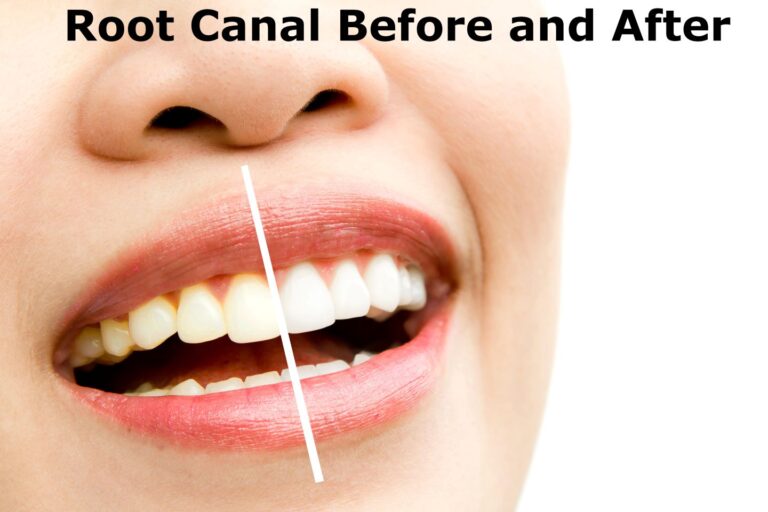How to Treat Cavity Between Teeth? Symptoms and Preventions

Cavity Between Teeth
As kids, we were often told not to eat too many sweets, or we’d have cavities between teeth. When teeth decay, cavities form. Cavities develop when food is allowed to sit on the teeth and rot. Bacteria dwell in the plaque on your teeth and break down sugar to make acid. The acid dissolves the minerals in your tooth enamel, weakening its protective function. It can lead to cavities if not stopped.
The gap between teeth, or interdental space, is integral to oral and general health. This seemingly insignificant space between teeth is essential in eating, hygiene, and the aesthetics of a person’s grin. Maintaining good dental health requires understanding the anatomy, significance, and potential problems associated with the space between teeth.
What an interproximal cavity feels like and how to treat cavity between teeth will be covered in this article.
Causes and Symptoms of the Cavity Between Teeth
Depending on the severity and location of the cavity in between teeth, any symptoms and indicators may be present. In the early phases of cavity growth, you may notice no discomfort. You may see these symptoms as the deterioration advances:
- Toothache, random pain, or pain for no apparent reason.
- Pain in the teeth
- Experiencing mild to severe discomfort when ingesting sweet, spicy, or cold foods or beverages.
- Teeth with apparent flaws, such as pits or holes
- Terror in the jaws
Treating Cavities
Regularly checking your teeth can catch cavities early before they spread and cause additional pain. In this article, we’ll discuss how to limit your treatment options for niches.
Remineralization
Remineralization is a natural tooth repair process. The elements in your saliva, specifically calcium and phosphate, are used by your body to build strong tooth enamel.
Demineralization is the daily loss of tooth mineral content brought on by food and drink. Demineralization of teeth occurs in the mouth naturally. When your body cannot restore what it loses, you may experience complications. Many things, such as the bacteria, acid, and saliva in the mouth, influence demineralization.
To keep teeth healthy and robust, remineralization can replenish minerals lost over time. Remineralization agents help the enamel absorb minerals like calcium and phosphate, which strengthens the enamel. Fluoride, a mineral added to drinking water to reduce the likelihood of tooth decay, also strengthens enamel by binding to it.
Cavities form when mineral loss from teeth exceeds mineral gain due to remineralization.
Filling
Once the dentist has removed the decay, a filling is inserted to restore the tooth’s function, improve its appearance, and protect it from additional decay and loss. If one has a cavity between teeth, it can be repaired by a filling. You should know the many types of fillers available before deciding on one.
- Silver, tin, copper, and mercury combine to form amalgam fillings. It is challenging, long-lasting, and can replace other fillings without breaking the bank.
- Composite fillings are an alternative to metal and porcelain restorations. It’s soft when inserted into the cavity between front teeth but hardens when exposed to blue “curing” light.
- Fillers, known as glass ionomers, are composites of the two materials. Because of their reduced strength, they are ideal for children whose teeth are still developing.
- As the name indicates, these are made of gold. Gold fillings last long but are beyond most people’s price range.
A filling is done in the dentist’s office. The gums are numbed before the procedure begins. A local anaesthetic is injected into the gum after this has taken effect. The dentist uses a drill or another instrument to remove the decaying portion of the tooth and then fills the resulting cavity between teeth. The final step is to polish the filling and fine-tune it to make your bite comfortable.
Root Canal
Pain and heightened sensitivity are typical results of trauma to the tooth or its root. If you experience frequent pain when biting down, it may indicate that you require root canal treatment.
A root canal is a procedure used to salvage a significantly damaged or infected tooth rather than extracting it when decay has reached the pulp (the chamber in the tooth containing the nerve and blood vessels). Removal of infected tooth pulp. Medication is occasionally placed there to treat an infection in the root canal. The pulp is removed, and a filling is added in its place. Possible infections and tooth abscesses can also be cured using this method.
Crown
Over time, your teeth may get damaged. Several factors, including tooth decay, can contribute to this problem. Crowns for teeth are artificial “caps” made to look like natural teeth.
Dental crowns are caps glued over your teeth to protect them from further damage.
There are a few situations in which you might require a dental crown:
- Maintaining the integrity of a cracked or broken tooth that is otherwise fragile due to disease or cavities.
- Repairing a tooth chipped, cracked, or significantly worn down.
- Protecting and reinforcing a tooth that has had an ample filling placed but is otherwise severely compromised.
- Hiding disfigured or discoloured teeth.
Placing a covering over a root canal-treated tooth.
Extraction
Cavities can cause tooth damage severe enough that extraction is the best option. When a tooth has extensive excavations, it is usually so destroyed that it cannot be saved and must be extracted. The root must be yanked out of the ground.
Using local anaesthetic to numb the area before tooth extraction is standard practice. Your dental surgeon will remove the tooth and its root. Sometimes, the extraction socket will be filled with bone graft material. The whole thing usually takes around an hour.
Routine Dental Checkups
Visiting the dentist regularly is the most effective way to keep cavities at bay. Only a dentist or dental X-ray can reliably detect cavities. Maintaining good oral care, oral hygiene and preventing cavities requires regular dental checkups and cleanings.
12 Remedies to Kill Tooth Pain Nerve in 3 Seconds Permanently at Home?
PREVENTION
- If these cavities result from neglecting your teeth, you can protect yourself by practising good dental hygiene daily, such as brushing and flossing thoroughly. Use a soft-bristled toothbrush and fluoride toothpaste to keep your teeth healthy.
- For at least two minutes, twice daily, brush your teeth’ front, back, and chewing surfaces using gentle circular strokes while holding the toothbrush at a 45-degree angle. It’s essential to keep your tongue clean.
- At least once a day, you should floss, focusing on the pits and grooves of the back molars, which collect food and are therefore more susceptible to decay. Floss in a zig-zag motion between all teeth in the upper and lower arches.
- Dental sealants are highly suggested after the eruption of the first and second primary molars. To prevent plaque and bacteria buildup on the back molars, dentists may use adhesives and plastic coatings that provide a smoother surface. There’s less chance of getting cavities if you do this.
Conclusion
Teeth with cavities have had their protective enamel worn away. Bacteria and poor dental hygiene are two potential culprits.
A cavity that develops between two teeth, such as molars, is called an interproximal cavity. It’s likely that if you’ve ever had cavities in between teeth, it was an interproximal cavity. Similar to other types of cavities, those between teeth develop when the enamel of one or more teeth wears down.
Cavities can be treated with various methods, such as dental fillings, crowns, or a root canal. If a hole has severely compromised a tooth, extraction may be the only viable alternative for treatment.





